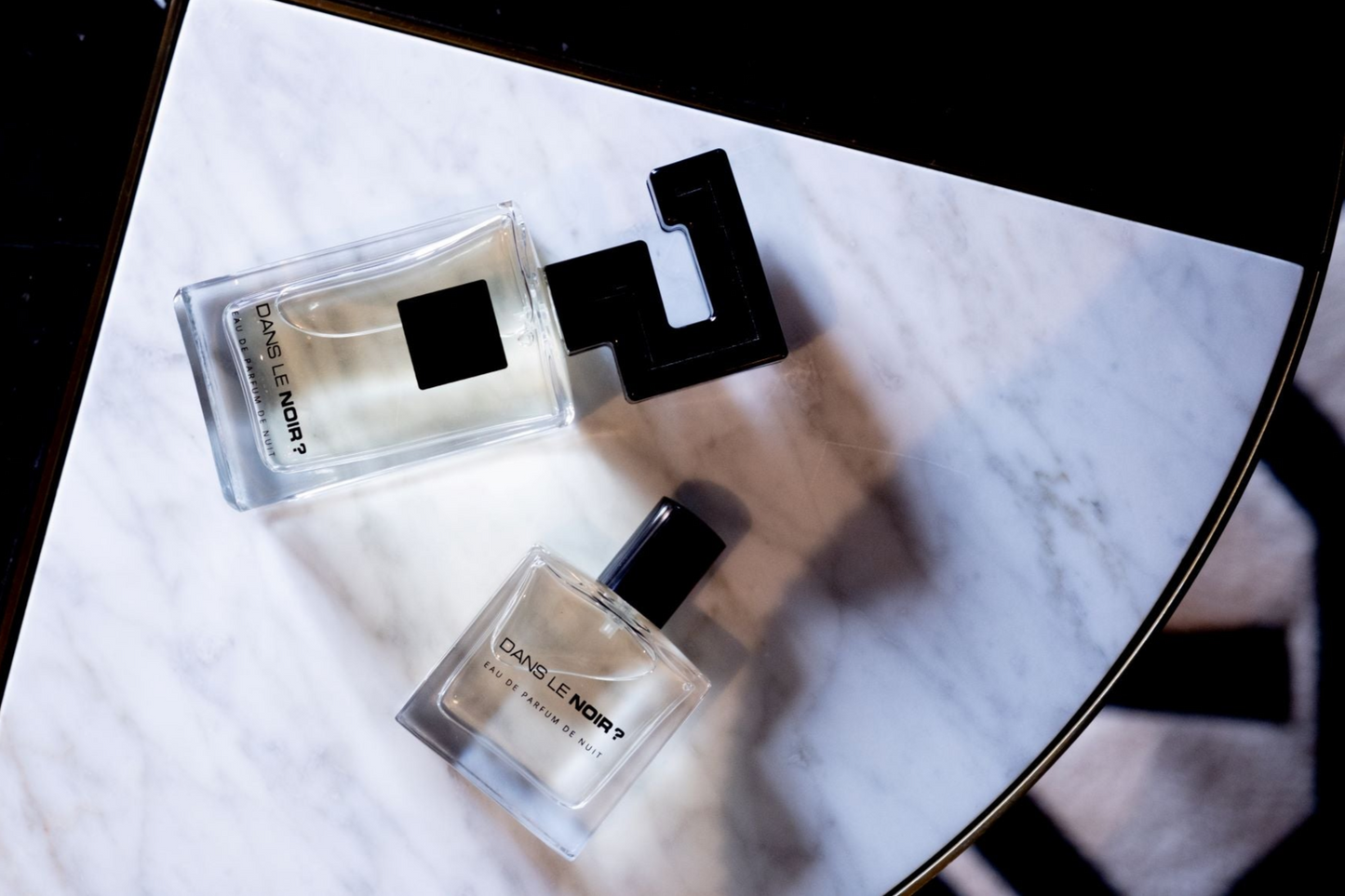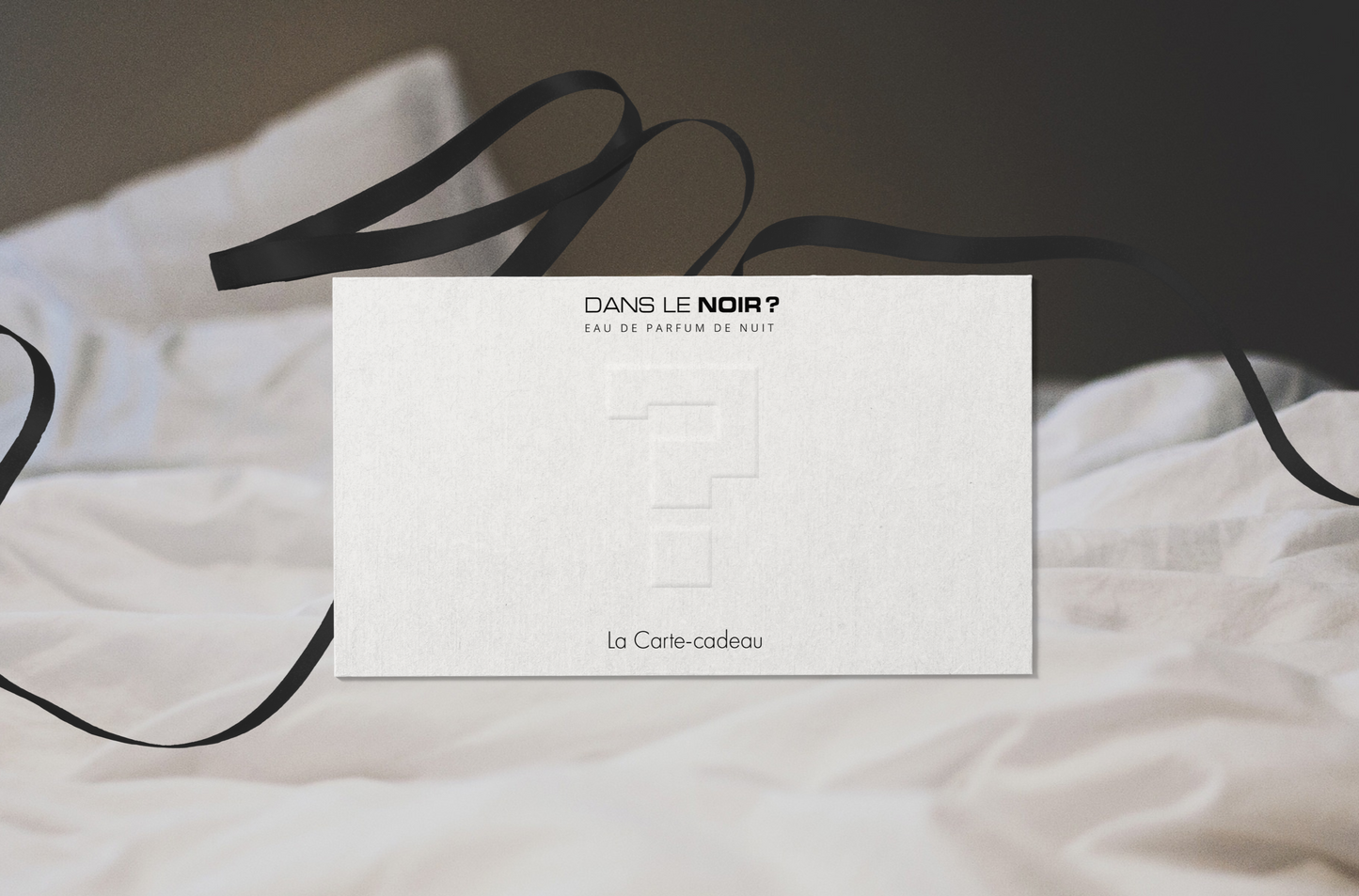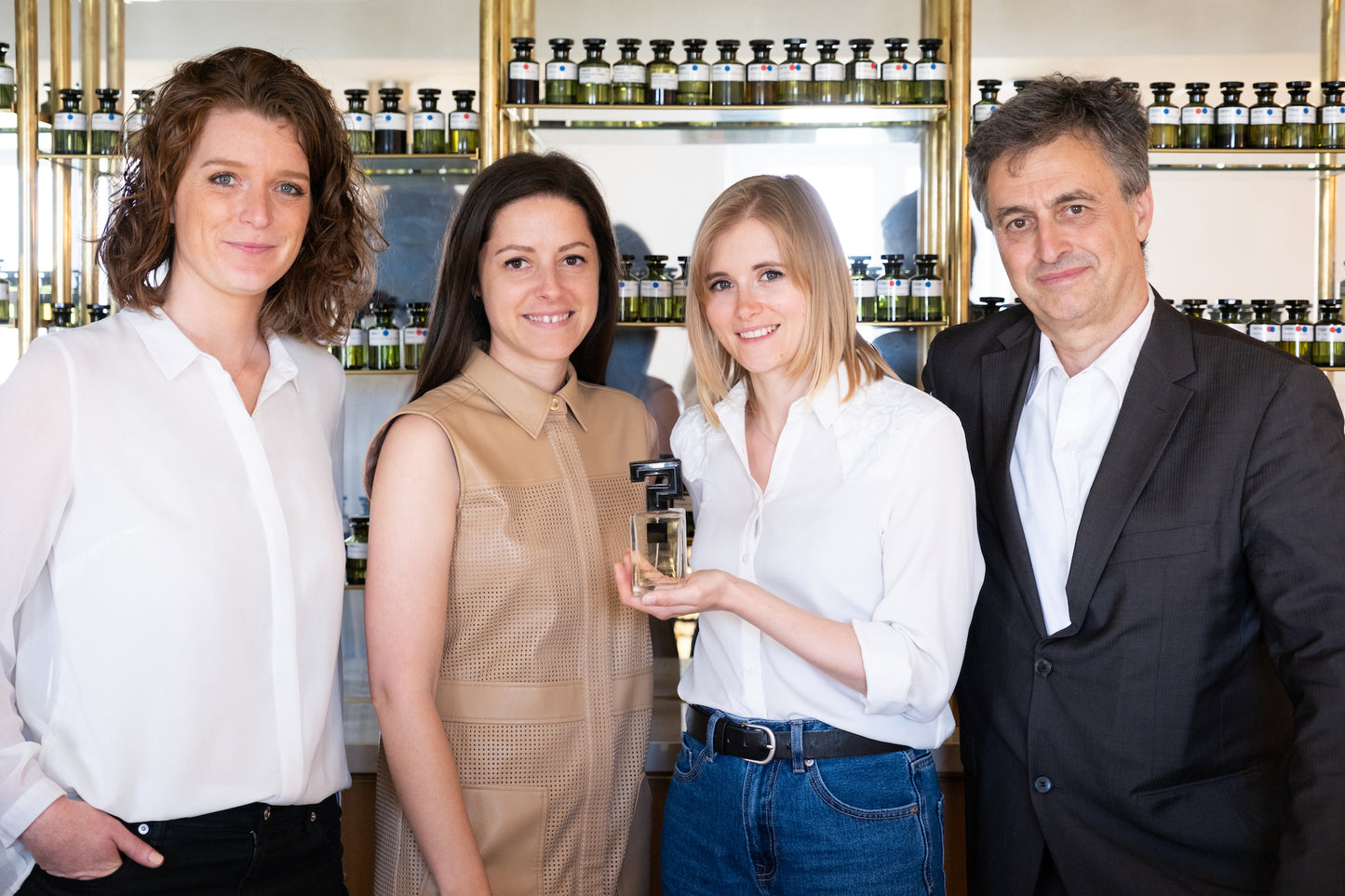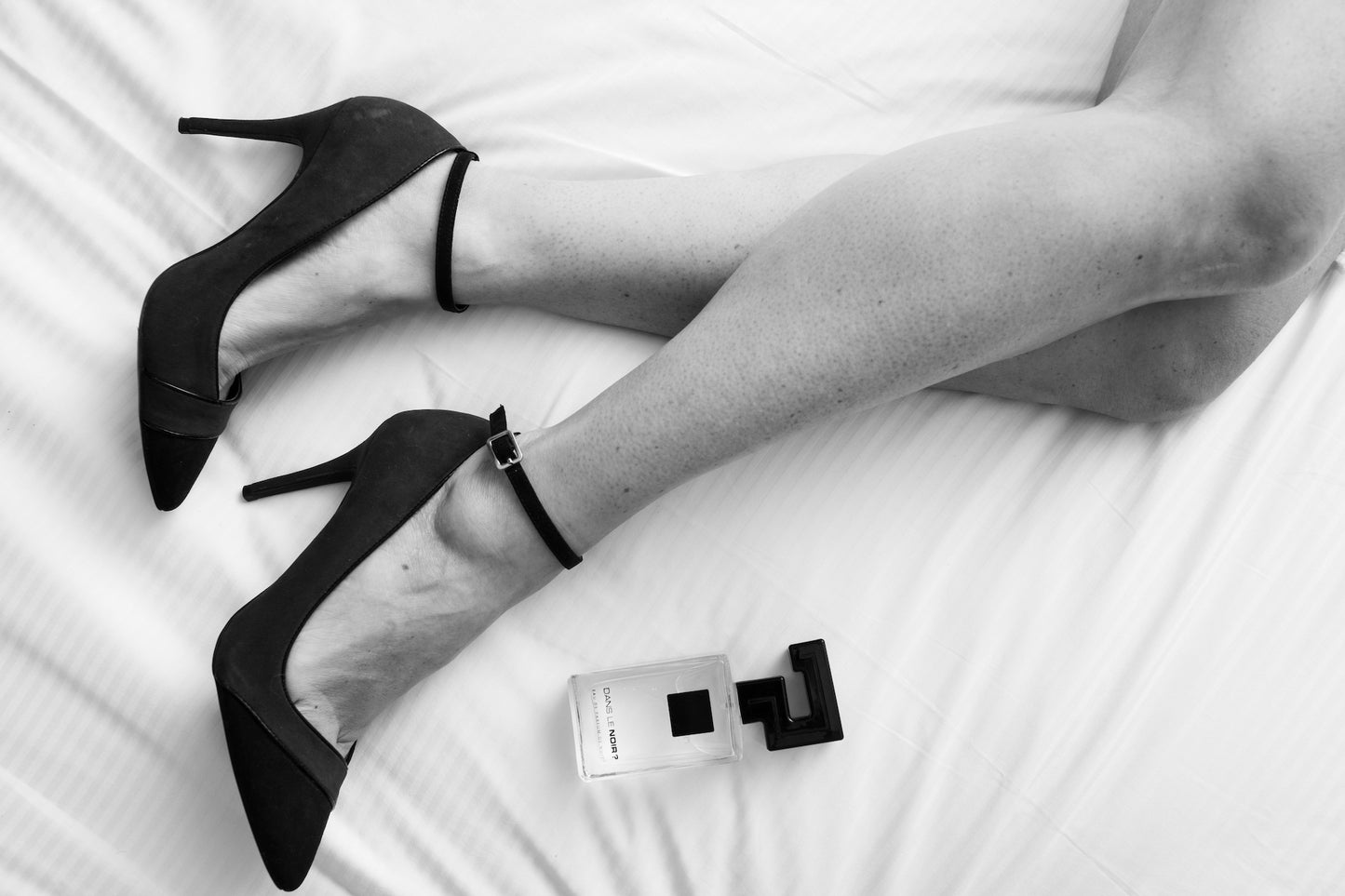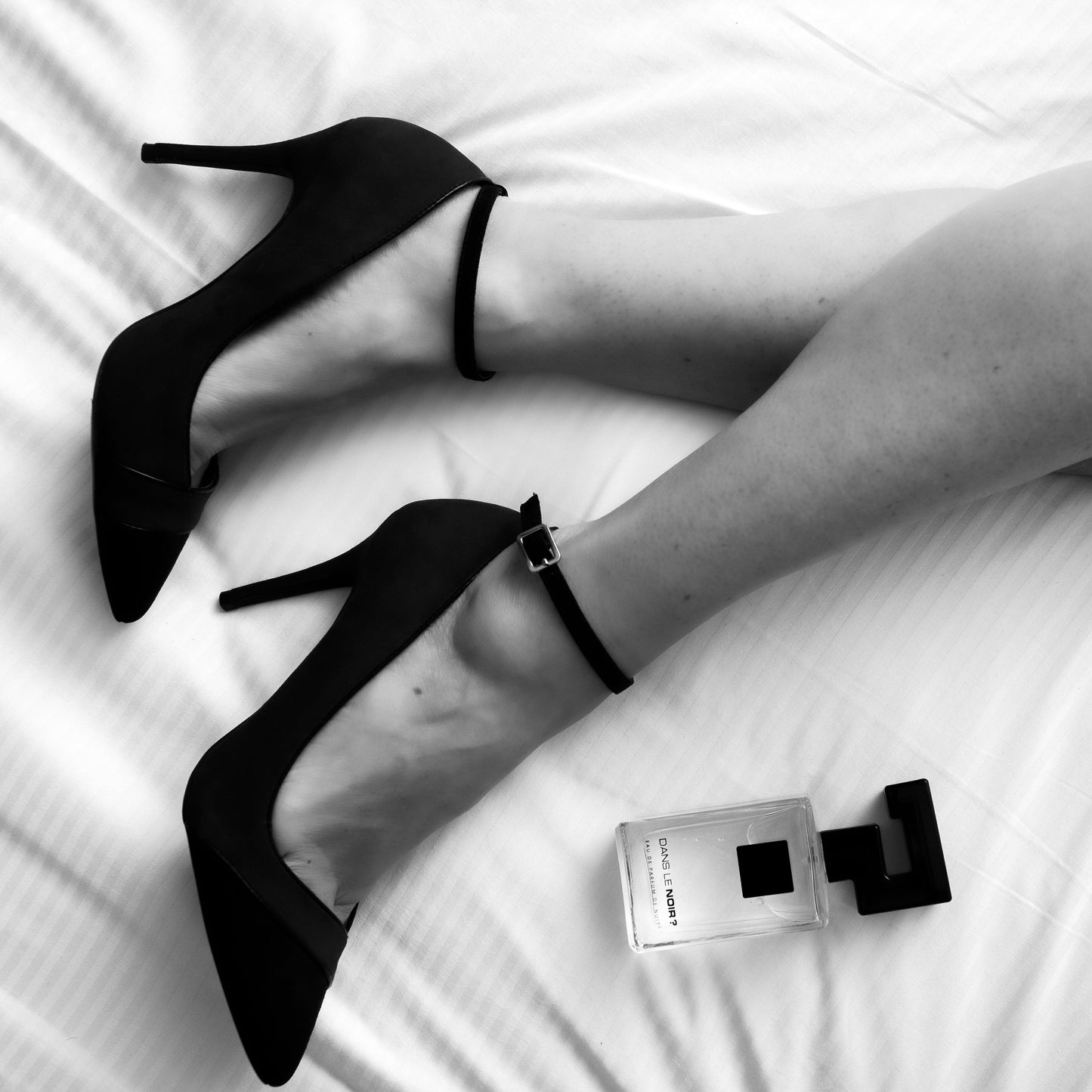
In a world where everything is accelerating, where appearances dominate, a new expectation is emerging: that of feeling, of being touched, of being enveloped. Perfume , long perceived as an aesthetic accessory or a social marker, is today freeing itself from its most visible codes to become something else. An invisible treatment. A gesture of well-being. An emotional companion.
This is the very essence of emotional perfume , this growing trend that places feelings at the heart of olfactory creation. Far from demonstrative perfumes, garish scents or gendered marketing constructs, emotional perfume addresses itself first and foremost. It no longer seeks to seduce others, but to soothe, reassure, and refocus.
More than just a stylistic evolution, it is a real shift: perfume becomes a tool for well-being , a ritual of sensory anchoring that naturally finds its place in our evening routines, in those moments of calm when we reconnect with our inner selves. Through its soft, woody, musky or milky notes, it creates an olfactory bubble, an emotional cocoon.
Some olfactory creations go even further. Conceived in the dark, evaluated without the slightest visual influence, they were designed from the outset to accompany emotion rather than image . Like the Parfum de Nuit Dans le Noir?, they reinvent the place of perfume in our lives: more intimate, more sensory, more sincere.
In this article, we will explore what the notion of emotional perfume really covers, why it is so important today, how it is transforming our relationship with scents, and how it opens the way to a new form of luxury: that of feeling good.

Perfume: from seduction to sensory care
For a long time, perfume was thought of, presented and sold as a tool of seduction . Its main role: to attract, please, and mark the memory of others . Sensual advertisements, Hollywood muses, sculptural bottles... The olfactory universe was inseparable from a social imagination where appearance took precedence over sensation.
But this model is evolving.
Recent societal changes—whether cultural, health-related, or emotional—have profoundly transformed our expectations. Perfume is no longer limited to a signature we display. It has become an extension of ourselves , an intimate tool, a vector of well-being .
It is in this context that emotional perfume is essential. Softer, more enveloping, it does not seek to impose its presence but to accompany that of the person who wears it . We no longer wear it to impress, but to feel good, to reassure ourselves, to find ourselves.
Olfactory gestures are also evolving. It's no longer just before going out that we perfume ourselves. It's also before going to sleep, after a shower, during a moment of calm or meditation . Perfume is becoming an invisible treatment , a gesture for oneself, for the present moment.
This paradigm shift brings perfume closer to other wellness practices: yoga, meditation, aromatherapy. We now talk about sensory perfume , soothing perfume , cocoon perfume . Consumers are looking for fragrances that comfort more than they challenge , that bring people together rather than affirm .
Certain night fragrances perfectly illustrate this evolution. Their role is no longer to attract attention, but to accompany relaxation , to promote emotional anchoring at the end of the day. Their intensity is measured, their construction designed to harmonize with silence and the skin , not to impose itself.
Perfume then becomes a daily sensory treatment . A discreet luxury. A faithful, gentle, confidential presence.

What is an emotional scent?
The term “emotional perfume” isn't marketing jargon. It refers to a new, more intimate, more sincere approach to olfactory creation. An emotional perfume isn't a fragrance that seeks to please or attract attention. It's a fragrance that resonates with an inner sensation , that touches, envelops, and soothes.
We recognize an emotional perfume by what it makes us feel before we even try to analyze it . It evokes a childhood memory, a reassuring presence, a soft fabric against the skin, a soothing mist in a quiet room. It is a fragrance that provokes an instinctive reaction, sometimes physical, but above all emotional .
Unlike so-called trail or signature fragrances, emotional fragrances play the proximity card. They do not invade the space. They blend into the skin , often in a gentle but persistent concentration. Its accords are designed not to surprise, but to harmonize with the state of mind of the person wearing them.
The most frequent notes in this type of composition are:
- Milky or creamy woods , like sandalwood , which create a cocoon effect.
- Soft, clean, powdery musks , reminiscent of the warmth of a fabric or the softness of an embrace.
- Vanilla, almond, balsamic accords, which evoke tenderness and comfort.
- Sometimes, aquatic or airy floral touches, to accompany breathing and escape.
These are perfumes that are not defined by their olfactory pyramid, but by the emotions they trigger : calm, soothing, grounding, softness, confidence.
They often fit into personal moments : an evening routine, a yoga session, a time of refocusing. Emotional perfume then becomes a sensory gateway between the exterior and the intimate , between the world and oneself.
This emotional dimension is sometimes integrated from the design stage. Some perfumers, like those behind Parfum de Nuit Dans le Noir?, have explored creative processes where the emotion precedes the note , where the objective is not to “sign” a fragrance, but to convey a state .
More than a fragrance, it is an invisible presence . A breath that accompanies. A reassuring imprint.

Why does our brain associate scent and emotion?
This powerful link between scent and emotion is no accident. It is explained by the very nature of our olfactory system , which is intimately connected to the limbic sphere of the brain—the one that governs memory, emotions, and certain instinctive behaviors.
Unlike the other senses, olfactory information does not pass through the cortex before being processed . When we inhale a scent, it is immediately sent to the amygdala and hippocampus, key areas of emotional memory. This explains the suddenness with which a scent can trigger a memory , sometimes decades old, or bring out an inner state that we thought we had forgotten.
This ability of perfume to awaken deep and often unconscious emotions makes it a unique tool, much more than a simple cosmetic accessory. A perfume does not just smell good: it touches something alive , ancient, personal.
An emotional fragrance , by its very nature, seeks to activate this emotional memory. It doesn't speak to the mind, but to the heart. It creates an inner atmosphere, a perceptive bubble in which the body and mind find themselves aligned.
Neuroscience studies have confirmed this phenomenon: certain scents, such as lavender, vanilla, or sandalwood, have measurable effects on heart rate, muscle relaxation, and a sense of well-being. Their mere presence can reduce stress , promote sleep , or stimulate positive feelings .
This is precisely what certain perfumes designed to be worn in the evening, in a moment of calm, aim for. Conceived as rituals of appeasement, they do not seek to seduce the outside world, but to tune into the inner emotional state . They become instruments of gentle regulation, invisible partners in overall well-being.
In the case of the Night Perfume Dans le Noir? , for example, the approach goes even further. Designed and evaluated in total darkness, this perfume was conceived without any visual or marketing filter , only through the emotion it arouses. It was tested by visually impaired sensory experts, precisely because their finer olfactory perception allows them to capture the emotional effect of a perfume with rare acuity.
This shows how perfume can become a sensory language , a way of resonating with oneself. It speaks not only to the skin, but to memory. Not only to others, but to the soul.

When perfume becomes a well-being ritual
Wearing perfume is no longer just a social or aesthetic act. Increasingly, this gesture is becoming a personal, almost meditative ritual , part of a moment for oneself. A calm moment, far from the hustle and bustle, where the body and mind can finally reconnect.
In this new relationship with perfume, it is no longer the gaze of others that motivates the application, but the need to feel, to be enveloped, to be soothed . This is how perfume enters the field of well-being, no longer as a sensory distraction, but as a tool for anchoring, comfort, and emotional regulation.
The emotional fragrance then invites itself into key moments of the day:
- In the evening, after showering, when the skin is still warm, ready to welcome the softness of a milky wood or a light musk.
- Before bed, to prepare the body to slow down, promoting relaxation with a vanilla, balsamic or powdery note.
- During a moment of refocusing, writing, slow breathing, like a sensory cue that calms the mind.
This type of perfume does not seek to demonstrate. It accompanies , it suggests , it soothes . It creates a soft olfactory ambiance, like an intimate bubble in which one can take refuge. It becomes an invisible support , a subtle extension of a moment of calm or chosen solitude.
This is the philosophy that some perfume houses have integrated into their creations. Through their formulation, their olfactory texture, their measured intensity, they offer fragrances designed not to be noticed, but to be felt .
With this in mind, the Night Perfume Dans le Noir? was designed as a nocturnal sensory ritual . Its application is not a gesture of seduction, but a time of transition. It accompanies the passage from day to night, from movement to calm. Worn on bare skin, in a subdued environment, it becomes a link between the body and the imagination. A discreet, elegant, enveloping olfactory caress.
More than an evening fragrance, it is an invitation to settle down , to breathe more slowly, to reconnect with one's own sensitivity.
This shift of perfume towards well-being profoundly transforms its function: it is no longer a signal addressed to others, but a gentle response addressed to oneself.

Returning to oneself through the senses
If emotional perfume touches us so deeply, it's because it reactivates something essential: our connection to the body, to sensations, to real presence. In an era saturated with visual solicitations and digital stimulation, olfaction rehabilitates another type of presence: silent, intimate, embodied.
By nature, smell does not lie. It cannot be explained. It acts. It summons a memory, an emotion, a physical sensation without needing justification. It appeals to a primitive sensory memory , much more immediate than that of words or images.
In this context, perfume becomes a lever for reconnecting with oneself . It acts as a reassuring signal. An olfactory anchor that says: "I am here, now." Worn directly on the skin, it invites us to slow down, to breathe differently, to refocus.
This is where emotional fragrance comes into its own. No longer as a surface accessory, but as a deep sensory companion . It is part of a whole: the soft light of a room, the texture of a garment, the silence of a chosen moment. It completes an interior ambiance.
The sensory experience then becomes global . It is no longer just a question of fragrance, but of multisensory sensations . A velvety touch, a soothing sound, a soft light... and a sweet scent that floats in the air. The ritual is complete. The moment becomes a refuge.
This is precisely what the sensory workshops in the dark designed by Dans le Noir? offer. By depriving participants of sight, they allow for a deeper immersion in the other senses. The sense of smell regains its full power. Emotions are released, and the imagination unfolds.
The Night Perfume In the Dark?, born from this expertise, embodies this approach. Designed without recourse to visuals, tested in sensory immersion, it was designed not to impose itself , but to unite with the body, with the moment, with the sensation. Its enveloping notes accompany the slow gesture, the hushed moment, the inner pause.
True luxury today may no longer be about pageantry, but rather about the ability to feel deeply. To create a bubble of silence, emotion, and accuracy. Perfume then becomes a sensory language—and one of the most subtle ways to return to oneself.

The example of night perfume: an olfactory treatment for the intimate area
In this evolution of perfume towards sensory and emotional care, one category clearly stands out: night perfume . Less known, less exposed, it nevertheless carries a new power. Discreet, enveloping, soothing , it does not address the outside world, but the inner sphere. It accompanies the body in its moments of relaxation, transition, calm.
Night perfume is not meant to seduce. It is not a signal to others, but an inner language . It is a gesture that we offer ourselves, in the privacy of the evening , at the moment when we leave the tumult of the day. It can be applied to bare skin, the wrists, the neck, or even the sheets. It then becomes an olfactory caress , an invisible cocoon, a link between the body and sleep.
It is precisely with this logic in mind that the Parfum de Nuit Dans le Noir? was conceived. Designed for the night, but also in the night , it embodies this shift in use. Born from a unique approach combining sensory expertise, immersion in darkness and inclusive co-construction, it does not respond to any classic marketing standards. It questions rather than affirms , as suggested by the question mark that has become the brand's emblem.
Its composition reflects this intention. It includes:
- Sandalwood , with its creamy and deep accents, evokes the warmth of a fabric, the gentle strength of an embrace.
- The tonka bean , milky, velvety, with its slightly almondy facet, which envelops the skin in a reassuring veil.
- White musks and vanilla , which prolong the feeling of comfort, and open to a calm, elegant, almost meditative sensuality.
Tested in total darkness, this fragrance was evaluated not to appeal to a target audience, but to provoke a universally soothing feeling. Its trail isn't spectacular. It's deep, fluid, and intimate . It doesn't seek to turn heads, but to invite you to close your eyes.
Le Parfum de Nuit Dans le Noir? is thus part of a new way of experiencing perfumery: no longer as a social projection, but as an invisible emotional treatment , a sensory support, a gentle trace that accompanies secret moments.
It is the very example of emotional perfume as it is defined today: sensory, sincere, subtle.

Towards a new generation of perfumes?
Perfume is no longer what it used to be. Slowly but surely, it is transforming. From an object of demonstration, it is becoming a tool for personal transformation . From a social accessory, it is evolving into an intimate, emotional, almost therapeutic gesture .
This shift is not a passing fad. It reflects a profound change in our relationship with luxury, care, and identity . Perfume no longer has to say "this is who I am to others," but "this is what I feel for myself."
Emotional fragrances embody this new generation. Designed to accompany mood, support a transition, bring comfort or promote a particular state of consciousness, they are part of a broader dynamic: that of slow beauty , engaged sensory , personal experience .
More and more designers, independent brands, and even players from the world of skincare and personal development are interested in this approach. They are questioning the function of perfume: what if it could guide , reassure , repair ? What if it finally became an emotional response rather than a social signature ?
In this changing landscape, certain initiatives are leading the way. This is the case of Dans le Noir?, which, through its radically sensory, inclusive, experimental approach, offers a new model: that of a perfume designed in the dark to reveal the inner light.
The legitimacy of this approach is based on years of experience in sensory immersion, in restaurants, spas and workshops designed to awaken the senses beyond the visible. This expertise has given birth to an olfactory product that does not impose itself , but offers itself with modesty and accuracy .
Tomorrow, perfume could well be what it always should have been: a free, sensory, intimate, and peaceful expression of oneself. An invisible treatment. A discreet presence. A memory that breathes.
Conclusion
Perfume is no longer just the trail we leave behind. It becomes the imprint we feel inside , the discreet breath that accompanies, comforts, and reveals. By evolving into a form of invisible care, emotional perfume invites us to wear it differently: no longer to seduce, but to feel.
In this new olfactory era, power is no longer in exuberance but in precision. The scented gesture becomes a personal ritual, an act of refocusing, a moment chosen to reconnect with one's own emotions.
Initiatives like Dans le Noir?, which designs its perfumes in the dark to better bring the light to the senses, show to what extent the link between perfume and emotion can become a deep and fertile territory of expression.
Perhaps true luxury today is no longer about shining, but about feeling aligned, calm, sincere, enveloped .
What if, from now on, wearing a perfume meant choosing what you want to feel , rather than what you want to show?
